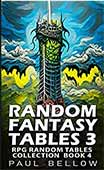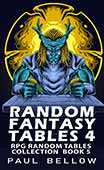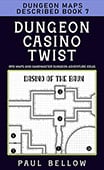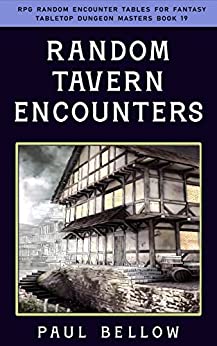Every Dungeon Master has, at some point, felt the creeping pressure of a table full of eager players staring expectantly while their minds scramble for something—anything—to throw their way. Devising engaging side quests at a moment’s notice is an art unto itself, demanding creativity, quick thinking, and an encyclopedic knowledge of the world you’ve built. Sometimes, though, the well runs dry and the mental gears grind to a desperate halt. That’s where ChatGPT and similar AI tools become a DM’s secret weapon, ready to deliver plot hooks, quirky NPCs, and vivid worldbuilding at the tap of a keyboard.
But not every side quest will set hearts racing or imaginations ablaze. What separates the forgettable fetch quests from the adventures players talk about for years? Meaningful stakes, for one—side quests have the most punch when they tangibly affect the characters or the world in ways large or small. Unexpected twists keep even the most jaded adventurer guessing, and tying quests directly to player backstories transforms a mere distraction into a moment of personal drama. Side quests should feel like organic extensions of the main story, not tangential chores tacked on for the sake of XP.
Enter the humble prompt: a carefully crafted ingredient list for the AI’s creative kitchen. Great prompts do not replace your imagination—they amplify it. Think of ChatGPT as an enthusiastic writing room partner, riffing on your seeds of inspiration and returning with options you never would have dreamed up in isolation. Imagine presenting a seed of an idea, and watching it blossom and spiral into places you might never have dared alone. (The LitRPG Adventures DND quest generator is kinda special and unique…)
The real beauty of working with AI lies in collaboration. The Dungeon Master wields the prompt; the AI brings the possibilities. Like any partnership, the back-and-forth refines each idea. You might ask for a quest involving a haunted lighthouse, then pick your favorite angle from the AI’s list and run with it, adding your own signature flavor. This collaborative approach can also help flesh out regions of your world that are underdeveloped or add surprising connections between storylines.
Rather than viewing prompts as shortcuts for lazy preparation, embrace them as fuel for your creative engine. The process—your curation, revision, and improvisation—is what transforms a raw AI output into an unforgettable gaming moment. The best prompts light a spark; your imagination sets the fire roaring. In the sections below, you’ll find practical advice, structure tips, and inspiration to make side quests that are anything but generic, all while preserving your campaign’s unique tone and energy.
- Core Prompt Structures for D&D Side Quests
- Prompting for Specific Goals
- Why AI Tools Like LitRPG Adventures Workshop Outshine ChatGPT Alone
- Storing and Organizing Generated Content
- Making Prompts Work for Your Campaign Style
- Six In-Depth ChatGPT Side Quest Prompt Templates
- Final Thoughts on Prompting for Side Quests
Core Prompt Structures for D&D Side Quests
Crafting the perfect prompt for side quest generation starts with intent—what do you want the AI to provide? The more targeted your direction, the better the output. Begin by considering genre and tone: are you seeking grim, morally ambiguous entanglements or lighthearted hijinks fit for laughter around the table? Specificity can steer your results from vague tropes to tailored, campaign-ready content. Anchoring your request in concrete details—setting, NPC motivation, central theme—helps the AI deliver usable material, not just broad strokes.
Try my AI Tabletop RPG generators...and an extensive library of content!
Yet there’s a fine balance to strike. Swiftly overloading the prompt with backstory and limitations can strangle the AI’s creative instincts. The best prompts establish context, inject flavor, then pull back just enough to allow the AI room to surprise you. For example, “Generate a tense side quest in a shadow-infested forest involving a missing huntress and a cursed artifact” gives direction, but doesn’t dictate every beat of the story. This approach ensures the quest fits your campaign, but still contains that vital spark of novelty.
The tone of your prompt matters immensely. A request for a “darkly comedic” mission will yield very different ideas from a “high stakes, tragic side quest.” Dial in the atmosphere you want with clear adjectives—gritty, whimsical, epic, or suspenseful. And don’t neglect player dynamics: mention if you need a quest that leans into certain party strengths or teases out their flaws. Including whether the side quest is meant for quick downtime or a multi-session arc will also shape the result significantly.
Lastly, experiment and iterate! The first response may not be perfect, but a small tweak—altering a character’s role, shifting the location, or introducing a secret motive—can turn a generic quest into campaign gold. Think of prompts as living templates, refined over time to match the peculiar rhythms of your party and world. Try asking ChatGPT for three variations, or for twists on a familiar formula, and watch the possibilities bloom.
18+ Prompt Structures for D&D Side Quests:
- Generate a side quest involving a cursed relic hidden in a swampy village plagued by misfortune.
- Create a moral dilemma side quest for a chaotic good rogue who must choose between loyalty and justice.
- Design a travel-based side quest with three possible outcomes depending on party choices.
- Quickly develop a lighthearted side quest centered on a magical prankster NPC.
- Invent a fishing contest with high (and possibly supernatural) stakes in a coastal town.
- Write a political intrigue side quest set at a royal masquerade ball.
- Create a rescue mission to recover a lost child who vanished near ancient ruins.
- Generate a quest where party actions accidentally unleash a local mythological creature.
- Build a side quest for low-level characters involving a mysterious series of thefts in a bustling marketplace.
- Devise a side quest where an untrustworthy merchant offers an irresistible but suspicious deal.
- Outline a dangerous escort mission through monster-infested mountains.
- Develop an exploration quest set in forgotten catacombs beneath the city.
- Write a side quest that presents players with a powerful artifact they can either destroy or keep, each with consequences.
- Build a magical disease outbreak quest with roleplay and science-based solutions.
- Invent a quest involving a haunted performance at an enchanted theater.
- Design a “race against time” scenario where the party must stop a ritual at a doom-laden altar.
- Generate a pastoral side quest helping a farmer whose livestock is being stalked by an invisible beast.
- Create a multi-path quest involving two warring clans in the woods, both seeking party aid.
- Draft a comedic side quest centered on a talking animal with an urgent request.
The magic of side quest generation is not in perfecting a prompt at first blush, but in seeing what resonates at your table and refining your approach. What sparks laughter, debate, or genuine investment from your players? Take notes, adjust your prompts, and let new directions emerge organically. ChatGPT is a tireless brainstorm partner—so don’t be afraid to push its boundaries and adapt its ideas to better suit your campaign’s living ecosystem.
⚔️ Fantasy RPG Random Tables Books
Make life as a Gamemaster easier…
If you play Dungeons & Dragons, Pathfinder, or other fantasy RPGs, this
RPG random tables series
is packed with encounters, NPCs, treasure, and more. Available in eBook or print—either way, you’ll have a wealth of adventure ideas at your fingertips.
Treat each prompt like a seed tucked into your DM garden. Some will bloom right away, others need pruning or a change in placement. The more hands-on you are—combining, reshaping, and expanding—the more those side quests will feel like integral threads in your ever-unfolding narrative tapestry.
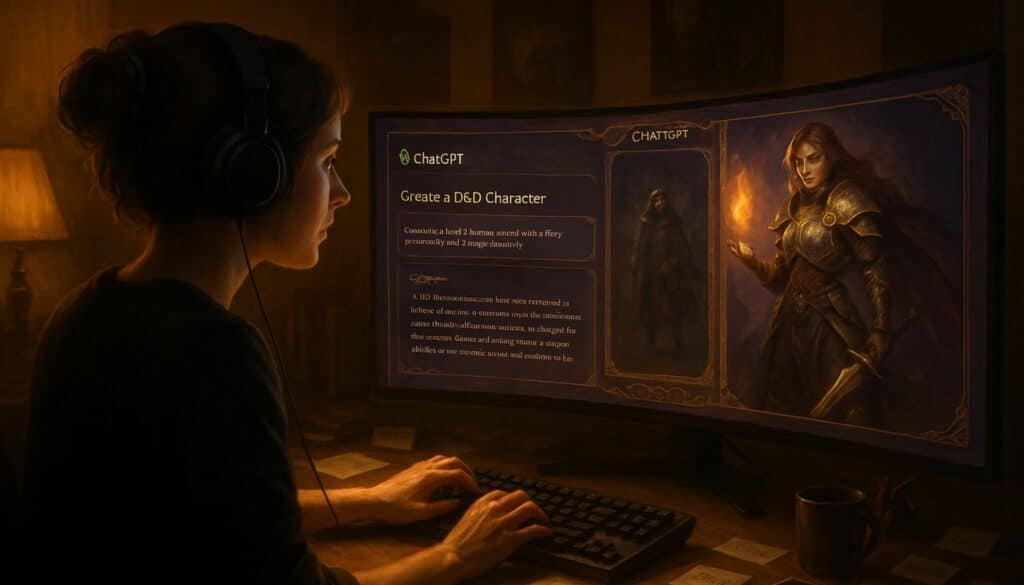
Prompting for Specific Goals
Every session has its own peculiar needs, its hidden narrative currents flowing just beneath the surface. Sometimes, a side quest exists for the sheer joy of exploration, letting players discover new corners of your world at their own pace. Other times, the DM needs to lay the groundwork for arc-shaking revelations, perhaps by foreshadowing a major threat or dropping hints about a looming villain’s agenda. By explicitly stating your goal within the prompt—whether worldbuilding, tension, or party development—you guide the AI to produce content with a purpose.
Categories of quest goals abound and are limited only by your imagination. Exploration-driven quests send the players across uncharted wilds, unveiling histories and mysteries otherwise lost to time. Conflict resolution quests focus on party dynamics, faction feuds, or moral dilemmas, compelling characters to make difficult choices. Building trust and internal party arcs? Prompts can spotlight secrets, test allegiances, or challenge the group’s unity through shared adversity. Want to introduce scarcity, rare resources, or magical MacGuffins? Resource acquisition quests present practical, tangible motivations that spark interaction with the world’s systems.
Consider how changing a goal transforms the structure and tone of a quest. If you want to test bonds of trust, a side quest involving betrayal or secret-keeping can bring buried tensions to the surface. If the aim is worldbuilding, perhaps the side quest reveals local folklore or the consequences of ancient wars. When the objective is catharsis or closure for a player’s backstory, a tightly focused quest can revolve around a family member, mentor, or unresolved trauma.
Begin every targeted prompt with why the quest matters in the context of your campaign. “I want a side quest that deepens the cultural lore of my desert setting,” creates a vastly different response than a more open-ended approach. State the stakes, the emotional undertones, and the desired player experience—tense, celebratory, melancholic, or anything in between. The more clearly you frame your narrative intent, the more likely you are to receive AI-generated ideas that don’t just fill space, but drive the story forward.
A thoughtful, goal-directed prompt bridges the gap between random filler and purposeful storytelling. You’ll unearth side quests that don’t just entertain, but serve as catalysts for character development, plot acceleration, and player investment. Let your vision guide the prompt, and let the AI fill in the details.
15+ Specific Goal-Based Side Quest Prompts:
- Create a side quest that foreshadows a major villain’s return through cryptic omens and local rumors.
- Design a quest to help a player resolve a long-lost family member subplot with bittersweet choices.
- Generate a conflict quest where the party must decide which of two rival NPC factions to support, with lasting repercussions.
- Write a quest intended to reveal hidden world lore about a forbidden magical practice.
- Develop an exploration quest that requires the party to decipher an ancient map to lost ruins.
- Generate a resource acquisition quest centered on collecting rare alchemical herbs for a powerful potion-maker.
- Create a “test of trust” side quest where party members must share or conceal secrets to succeed.
- Write a quest where a reclusive druid seeks aid in stopping a magical blight threatening a beloved forest.
- Develop a political intrigue side quest that exposes corruption within the city guard.
- Create a side quest introducing a new NPC faction vying for regional power.
- Generate a quest with a moral dilemma: rescue hostages or pursue a fleeing villain, but not both.
- Write a redemption quest for a party member’s rival who seeks forgiveness and a second chance.
- Develop a side quest that requires the party to investigate a rash of magical thefts.
- Create a quest to recover a stolen artifact vital to resolving a kingdom-wide crisis.
- Generate an arc where the outcome permanently alters the party’s reputation among local powers.
- Write a quest that culminates in a difficult negotiation with a legendary creature guarding a vital secret.
There’s real power in using intentional, goal-driven prompts to propel your campaign forward. Every side quest crafted with care becomes a thread in the larger story, a stepping stone toward climaxes and character revelations yet to unfold. Even the subtlest prompt can spark a memorable moment that reshapes the arc of your world.
Remember, side quests should serve your overarching narrative, not distract from it. Done thoughtfully, they amplify the richness of your world and give players agency and meaningful choice. With the right prompts, even a session that starts as a tangent can end with everyone at the table more deeply invested than ever before.
Why AI Tools Like LitRPG Adventures Workshop Outshine ChatGPT Alone
While ChatGPT is an extraordinary tool for brainstorming and on-the-fly creativity, it doesn’t remember what happened last session, who the party’s favorite halfling barkeep is, or the intricate lore you’ve woven. Each interaction is a blank slate, which means you, the DM, shoulder the burden of maintaining narrative continuity. There’s no persistent campaign tracking—just single-serving inspiration that can be marvelous one day and miss the mark the next.
This is where specialized AI tools like LitRPG Adventures Workshop shine. Tools built for RPG campaigns don’t just spit out isolated quests; they keep tabs on your world, your players, and the evolving web of relationships at play. With persistent data, you can track quest chains, recurring NPCs, evolving story arcs, and ongoing consequences, all in one integrated workspace. The ability to reference campaign history ensures each new side quest fits seamlessly into the ongoing narrative.
In addition to memory and continuity, tools like LitRPG Adventures Workshop offer templates and settings fine-tuned for fantasy genres. Want a wizard’s guild with three layers of intrigue? Or a legendary beast tailored to your party’s current power level? Genre-specific tuning means outputs are more likely to match your tone, from high fantasy to sword-and-sorcery pulp. These tools can even generate custom items, settlements, and interconnected storylines, all tailored to your campaign’s unique flavor.
⚔️ Fantasy RPG Random Tables Books
Make life as a Gamemaster easier…
If you play Dungeons & Dragons, Pathfinder, or other fantasy RPGs, this
RPG random tables series
is packed with encounters, NPCs, treasure, and more. Available in eBook or print—either way, you’ll have a wealth of adventure ideas at your fingertips.
Finally, specialized AI tools often feature built-in storage, tagging, and searchability—so when inspiration strikes, you never lose track of it. Companion resources like campaign wikis, NPC databases, and player tracking help ensure every thread comes back around. The result? More robust, smoother-running campaigns and a DM with more time and energy for the magic that happens at the table.
| Tool | Persistent Campaign Data | Genre-Specific Tuning | NPC Generation | Side Quest Continuity |
|---|---|---|---|---|
| ChatGPT | No | Minimal | Yes (general) | No |
| LitRPG Adventures Workshop | Yes | Yes | Yes (detailed) | Yes |
| Azgaar’s Fantasy Generator | Partial (with export) | Yes (maps/settings) | Limited | No |
| World Anvil | Yes | Yes | Yes (integrated) | Yes |
| Dungeon Alchemist | No | Some (maps only) | No | No |
| Donjon | No | Yes (focused tools) | Yes (random) | No |
| Kanka | Yes | Yes | Yes (basic) | Yes |
| Homebrewery | No | Yes (presentation) | No | No |
Ultimately, ChatGPT works best as part of a larger DM toolkit rather than as a one-stop solution. Mixing its flexibility and lightning-fast brainstorming with the campaign-tracking, continuity, and depth of more specialized AI resources delivers the best of both worlds. When combined thoughtfully, these tools empower you to prep less and play more, keeping your creative energy focused on what matters most.
As you build your adventures, think of ChatGPT as your idea engine, and LitRPG Adventures Workshop as your campaign’s memory. Whether you’re running a sprawling epic, intimate one-shots, or anything in between, tailor your use of tools to your unique prep needs, available time, and storytelling ambitions. The synergy between creativity and organization sets the stage for memorable tales.
Storing and Organizing Generated Content
A DM’s creative reserves are precious—so don’t let brilliant side quests vanish into the fog of forgotten Google Docs and crumpled notebooks. Organization is the invisible backbone of a vibrant, responsive campaign. Well-structured notes mean a striking plot hook or memorable NPC is always at your fingertips, ready to be reintroduced, repurposed, or woven into a bigger plot twist. Every piece of generated content is a potential story catalyst waiting to be rediscovered when the moment is just right.
Start with platform. Digital notebooks like Obsidian and Notion offer flexibility and powerful search features, while campaign wikis can be customized for your world’s unique needs. These tools let you tag, hyperlink, and nest content, making it easy to cross-reference NPCs, questlines, and setting details. Investing a few minutes after each session to paste in, tag, or annotate new AI-generated side quests pays dividends when you’re pressed for time or inspiration later.
LitRPG Adventures Workshop and similar tools streamline this process with integrated content management. Generated quests, character arcs, and lore snippets are automatically stored and can be sorted by theme, player level, plot significance, or even session date. This ensures narrative continuity and keeps recurring threads alive in your players’ minds. Search, filter, and versioning features also help you track changes and revisit earlier drafts for tweaks or inspiration.
Version control is underrated but essential. DMs often iterate and improve side quests over time. Tagging quests by campaign, player party, tone (e.g., dark, comedic), completion status, and related NPCs keeps your growing trove of ideas from becoming unmanageable. Color-coding or flagging high-priority, urgent, or dangerous quests ensures the right hook is always in reach, ready for that perfect campaign moment.
Try my AI Tabletop RPG generators...and an extensive library of content!
12+ Strategies for Organizing and Tracking Side Quests:
- Use Obsidian or Notion to create a cross-referenced side quest database.
- Maintain a campaign wiki (World Anvil, Kanka, etc.) for linking quests to settings and NPCs.
- Tag side quests by narrative theme: mystery, political, horror, etc.
- Organize quests by player level for quick retrieval and level-appropriate scaling.
- Add completion status—active, resolved, failed, or open—to each quest file.
- Create folders or pages for each session, listing quests presented and outcomes.
- Color-code side quest files by urgency, danger level, or narrative tone.
- Link associated NPCs and factions to every quest entry for continuity.
- Use campaign tracking tools with versioning to update or revise past quests.
- Maintain a shared quest log for players, noting decisions, clues, and lingering hooks.
- Track recurring villains or ongoing storylines within a dedicated “quest arcs” section.
- Periodically review and archive completed quests, noting lessons for future prompts.
- Create visual dashboards or mind maps to display quest interconnections.
- Use mobile-friendly tools for quick access during play at the table or online.
Organizing your side quests isn’t just about keeping chaos at bay; it empowers you to build a campaign tapestry layered with foreshadowing, callbacks, and payoffs. When you can quickly retrieve that long-dormant quest hook or resurrect a former NPC, your world feels alive and interconnected, ready to surprise players in new ways.
Structure and spontaneity are not enemies. The more you invest in keeping your content sorted and accessible, the more confidently you can improvise, respond to sudden player inspiration, and turn throwaway encounters into defining campaign moments. Good organization sets your creativity free, enriching your world for every session to come.
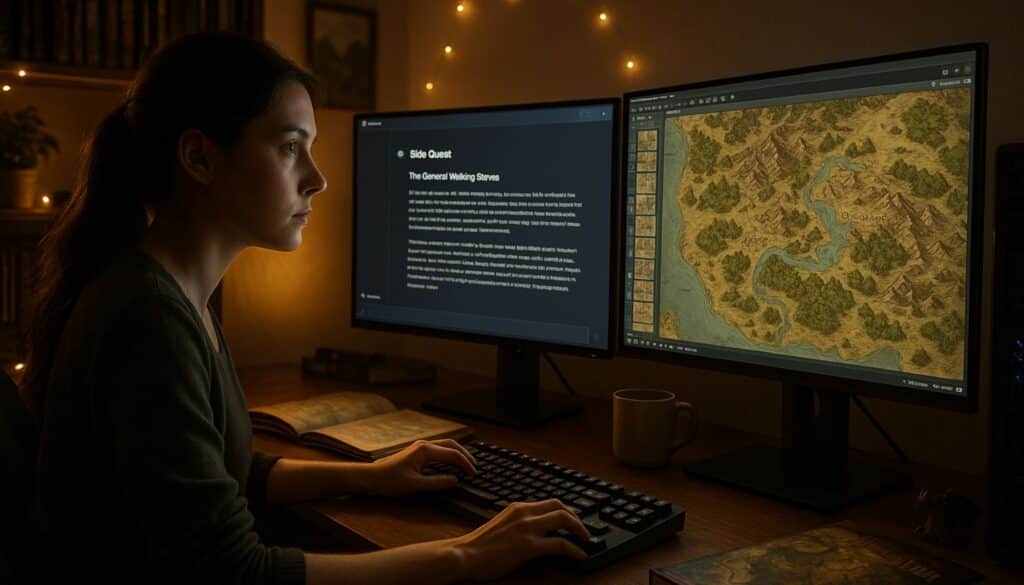
Making Prompts Work for Your Campaign Style
Every Dungeon Master brings a unique sensibility to the table—a rhythm, focus, and aesthetic that shapes the way stories unfold. Are you a sandbox architect, throwing the doors wide so players can chase every wild impulse? Do you prefer tight, story-driven arcs with carefully plotted twists, or perhaps episodic quests where each session stands alone? The style of your campaign should guide the phrasing and intent behind each ChatGPT prompt, ensuring that the content generated always feels like it truly belongs.
Sandbox campaigns thrive on open-ended prompts that provide situations, factions, and resources without locking players into predetermined outcomes. Here, you might ask for “competing NPC agendas” or “dynamic quests with multiple entry points,” letting the table’s actions drive the story. By contrast, mystery-heavy or investigative campaigns need prompts that emphasize clues, misdirection, and layered revelations—ensuring side quests have puzzles and secrets to unravel.
Tightly scoped, plot-driven games benefit from prompts focused on specific themes, emotional arcs, or player motivations. Requests that narrow the type of outcome, spotlight moral dilemmas, or introduce complex antagonists will generate content with clear stakes tailored to your campaign’s tone. Episodic games, on the other hand, can use standalone prompts where a single quest encapsulates a full beginning, middle, and end, perfect for groups that play irregularly or want contained stories.
Reflecting on your style before prompting ChatGPT prevents a disconnect between AI-generated ideas and your campaign’s established feel. Consistent phrasing, recurring themes, and familiar narrative rhythms deepen immersion and help players feel at home in your world. You are the creative compass; the prompt is your map.
15+ Prompt Phrasings Tailored to Campaign Styles:
- Sandbox quest with three conflicting NPC agendas and no guaranteed resolution.
- Episodic arc with a standalone side quest theme, clear beginning and end.
- Investigative quest featuring three layers of misleading clues and a dramatic reveal.
- Story-driven quest with a clear emotional arc and personal stakes for a specific character.
- Open-ended wilderness survival side quest with multiple resource paths to success.
- Time-sensitive quest that forces players to choose between two equally important objectives.
- Social intrigue quest with shifting allegiances and rumor mechanics.
- Heist-style side quest with security systems and multiple infiltration methods.
- Horror-themed quest emphasizing psychological tension and ambiguous supernatural events.
- Political side quest where party choices shape future power structures in the setting.
- Redemption quest tailored for a reformed villain seeking atonement.
- Urban adventure side quest involving competing criminal guilds.
- Exploration-heavy quest with environmental hazards and unexpected discoveries.
- Fairy tale-inspired quest with whimsical challenges and magical bargains.
- Side quest designed as a series of escalating dares or challenges from a capricious fey.
Ultimately, prompt construction is as personal as your DMing style. Ask yourself: Does this phrasing inspire the kind of stories I want to tell? Does it reflect the campaign’s pace, atmosphere, and core motivations? The more your prompts echo your voice, the more seamless and satisfying your sessions will become.
No tool replaces your intuition or style, but AI can magnify it when guided by your hand. Let the prompts become a reflection of the campaign you—and your players—most want to experience.
Six In-Depth ChatGPT Side Quest Prompt Templates
These fully fleshed-out, fill-in-the-blank prompt templates are designed to help DMs generate nuanced, campaign-ready D&D side quests using ChatGPT. Each template encourages detailed responses, providing structure, context, and multiple threads for plot, character, twists, challenges, and resolution. Just insert your chosen details where indicated, and you’ll get complex, flexible quest ideas on demand.
1. Faction Power Struggle Template
Generate a side quest set in [describe the location, e.g. a bustling trade city, isolated mountain village, or besieged fortress] currently divided by a brewing conflict between [describe the main factions, organizations, or power players]. Identify the key goals and motivations of each faction, the resource or principle at stake, and how the local population is affected. Flesh out important NPC representatives (with secrets or hidden agendas), events that could escalate tensions, and dilemmas the party must navigate if they get involved. Offer two or more potential outcomes, not just affecting the immediate area but shaping future campaign dynamics if the players pick a side, attempt negotiation, or upend the status quo entirely.
2. Cursed Location Investigation Template
Create a side quest where the party is called to [type of location, e.g. a fog-haunted village, ancient battlefield, blighted forest] plagued by [specific type of curse, supernatural phenomenon, or unexplained events]. Detail the symptoms or oddities the locals experience, rumors or legends about the origin, and how the curse affects daily life. Introduce several distinctive NPCs with varying beliefs or potential ties to the curse (including false leads or suspects), clues for investigation, and at least one significant twist or hidden truth. Present multiple possible methods for uncovering, confronting, or even exploiting the source of the curse—while explaining the wider consequences (positive or negative) for the location and its people.
3. Character Backstory Entanglement Template
Design a side quest that directly involves [player character name or class] by tying in [important NPC, unresolved event, or long-lost relationship] from their backstory. Explain how this connection comes to light and unexpectedly pulls the rest of the party into the drama. Illustrate the emotional stakes for the character, relevant secrets, and any external party (e.g. vengeful rivals, estranged family, powerful patrons) seeking to manipulate the situation. Create a scenario where the character is forced to choose between personal loyalty, group well-being, or a tempting opportunity. Provide two or three branching outcomes, each carrying ramifications for both the character’s arc and the group’s future.
4. Forbidden Discovery Template
Build a side quest where the adventurers stumble upon [describe the discovery, e.g. a sealed vault, cursed artifact, forbidden tome, or relic beast] during [downtime, an unrelated mission, or random travel]. Explain the dangerous or taboo nature of the discovery and why others (e.g. rival adventurers, cultists, local authorities) might want it. Identify hazards, puzzles, or guardians protecting the find, and give the party meaningful choices about whether to use, destroy, trade, or conceal it. Describe how their decision could ripple outward: who learns about it, potential threats attracted, or funders and foes emerging as a result.
5. Escalating Trouble Template
Generate a side quest that begins with the party encountering [seemingly minor problem: e.g. missing animals, vandalism, or disturbing rumors] in [specific location such as a rural hamlet, bustling district, or remote monastery]. Lay out clues and NPC testimony that hint at something more sinister. Gradually reveal that the situation is the early sign of [a greater threat: e.g. cult activity, extraplanar incursion, natural disaster] with the potential to spiral out of control. Map out how townsfolk react as the truth comes to light, what resources or allies the party might leverage, and how their actions could either avert a crisis, uncover hidden corruption, or unintentionally escalate the situation into chaos.
6. Major Moral Dilemma Template
Construct a side quest where the adventuring party is confronted with a high-stakes moral dilemma involving [describe the nature of the conflict: e.g. rescuing innocents vs. stopping a ritual, saving a town vs. keeping a dangerous secret, supporting a rebel cause vs. preserving local order]. Detail the parties involved, what’s at stake for all sides, and the pressures exerted by external forces or time constraints. Present complicated NPCs with understandable motivations, adding a personal element that makes the choice more than just theoretical. Include a last-minute revelation or twist that shakes up initial assumptions. Outline the long-term consequences the party—and the world—will face no matter which path they choose.
These longer templates invite deeper, richer AI-generated quests that can tie directly into your campaign’s lore, tone, and character arcs. Just fill in your custom campaign details for instant, compelling adventure hooks and fully realized side missions.
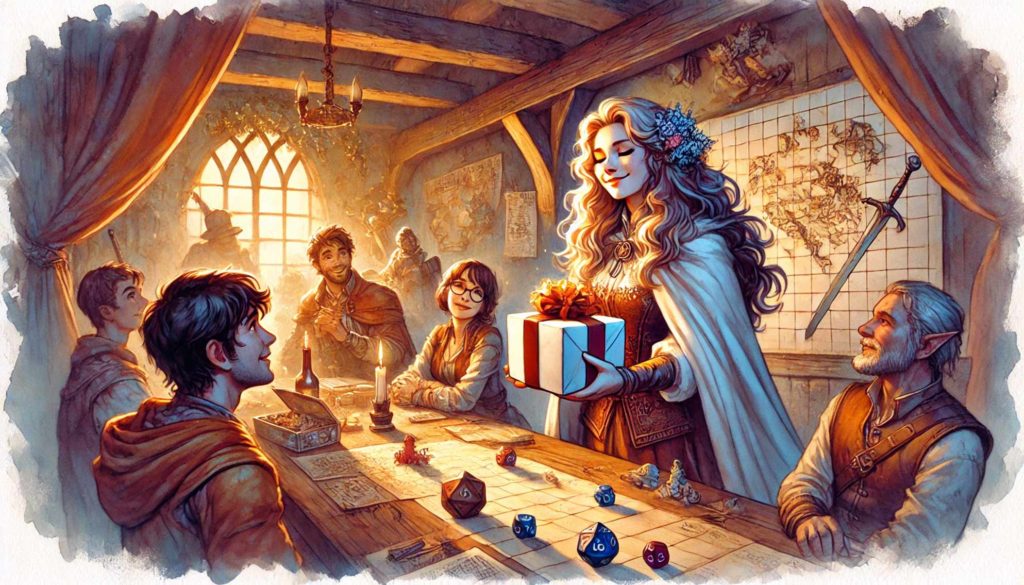
Final Thoughts on Prompting for Side Quests
Harnessing the power of AI tools like ChatGPT for D&D side quests is less about delegating creativity and more about multiplying it. When given the right direction, prompts can deliver burst after burst of inspiration, empowering you to spin up engaging adventures at a moment’s notice. The act of prompting is as much an art as it is a science; it thrives on specificity, nuance, and a willingness to iterate until the result perfectly fits your table’s needs.
Thoughtful prompting doesn’t just result in generic fetch quests or bland encounters. It unlocks quests that have weight, urgency, and personal connection—quests that allow your players to shape the world and, in turn, be shaped by it. Every prompt you refine and test at the table becomes part of your creative toolkit, a learned instinct that fosters deeper, more memorable engagement each session.
Remember, side quests are the secret sauce in any campaign: the moments where your players’ backstories come alive, where a seemingly insignificant NPC becomes a recurring foil, or where world lore unfurls in tangible, surprising ways. Through careful prompting, you empower the AI to seed your sessions with opportunities for character growth, emergent storytelling, and collaborative moments that might never have existed otherwise.
But prompts are just that—tools. The hands that wield them, the minds that fuse raw AI output with hard-won campaign lore, and the hearts that listen for what makes a table of friends gasp, laugh, or argue in-character, those are the true engines of great D&D. AI can offer sparks, but only the DM and players together can set the story ablaze.
Curiosity is your greatest ally in building better side quests. Tweak, rephrase, and remix your prompts based on what delights your group and what deepens your world. Don’t be afraid to embrace trial and error, or to let a wild suggestion take center stage. Some of the best story arcs began as off-the-cuff experiments, refined by repetition and memory.
Every session is its own laboratory, and every prompt a new test. Gradually, your prompting “muscle” will grow, and you’ll develop a deep understanding of what generates excitement, engagement, and storytelling momentum for your unique group. Just as importantly, you’ll keep finding ways for those AI-generated sparks to fuel not just the next adventure, but truly unforgettable campaigns yet to come.
⚔️ Fantasy RPG Random Tables Books
Make life as a Gamemaster easier…
If you play Dungeons & Dragons, Pathfinder, or other fantasy RPGs, this
RPG random tables series
is packed with encounters, NPCs, treasure, and more. Available in eBook or print—either way, you’ll have a wealth of adventure ideas at your fingertips.
Approach AI as a creative partner—a sounding board, a brainstorming engine, and sometimes, a jester poking holes in your most serious plans. The best moments will always be those that spring from a blend of guided randomness and DM wizardry, each fueling the other in a virtuous storytelling cycle. The world you create is limited only by your curiosity and your willingness to explore new techniques.
Keep asking better questions, keep organizing your discoveries, and above all, keep building those side quests that surprise, delight, and challenge every hero at your table. Your campaign is a living tapestry, and with the right prompting, it will stay vibrant and alive session after session.





